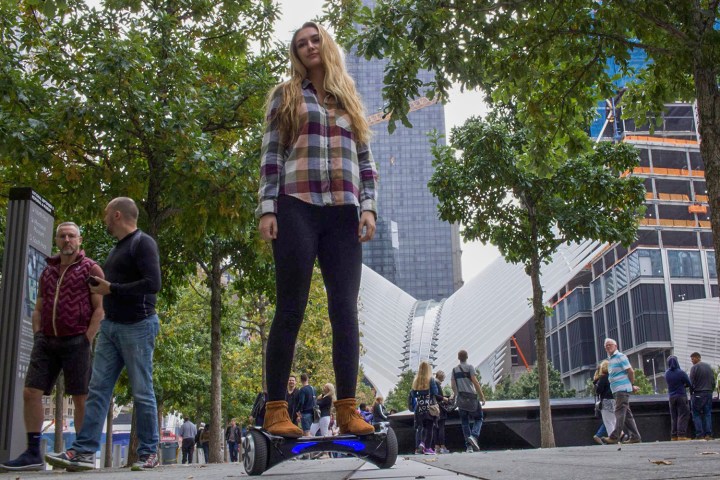
House fires caused by malfunctioning boards were reported as recently as Sunday and Monday, in California and Melbourne. Fortunately no one was hurt, although both homes were badly damaged.
The gadget’s huge growth in popularity in recent months has resulted in a number of dodgy outfits trying to cash in on the craze. Trouble is, they’ve been pushing out cheap, poorly made hoverboards with low-quality Lithium-ion batteries and other components.
In the run up to Christmas, a number of airlines banned hoverboards from being taken on planes, while Amazon removed all units from its online store until it could verify which were safe to sell.
Firefighters who tackled a blaze at a home in northern LA on Sunday night said it was caused by a hoverboard that caught fire as it was being charged. The LA Times said at least 10 states across the U.S. have reported hoverboard fires in recent months.
In Melbourne, meanwhile, another hoverboard-related fire totally destroyed a home, the Sydney Morning Herald said. The self-balancing scooter had reportedly been charging for 13 minutes when a smoke alarm alerted the residents to the fire. Damage to the home was put at an eye-watering AUS$500,000 (around $350,000), and no, tenant Ash Ibraheim didn’t have insurance.
Ibraheim told the Herald he’d bought three boards for his kids, though insisted they complied with Australian safety standards – which hopefully isn’t a comment on the quality of Australian safety standards.
Commenting on the incident, Melbourne fire official Phil Smith said, “I would suggest that if a person has one of these devices, it needs to be supervised while charging.”
As noted by the Herald, movie actor Russell Crowe last week found himself directly affected by airline crackdowns on hoverboards when Virgin Airlines told him his sons couldn’t take their two-wheeled toys on board. Furious that he hadn’t been informed of the ban before booking the tickets, Crowe decided not to board the plane.
“Too late to tell us at airport. Kids and I offloaded. Goodbye Virgin. Never again,” Crowe said in a tweet.
In early December, British authorities highlighted the scale of the hoverboard safety issue when it revealed that almost 90 percent of 17,000 hoverboards shipped to the country in the previous six weeks had been impounded after failing safety tests.


